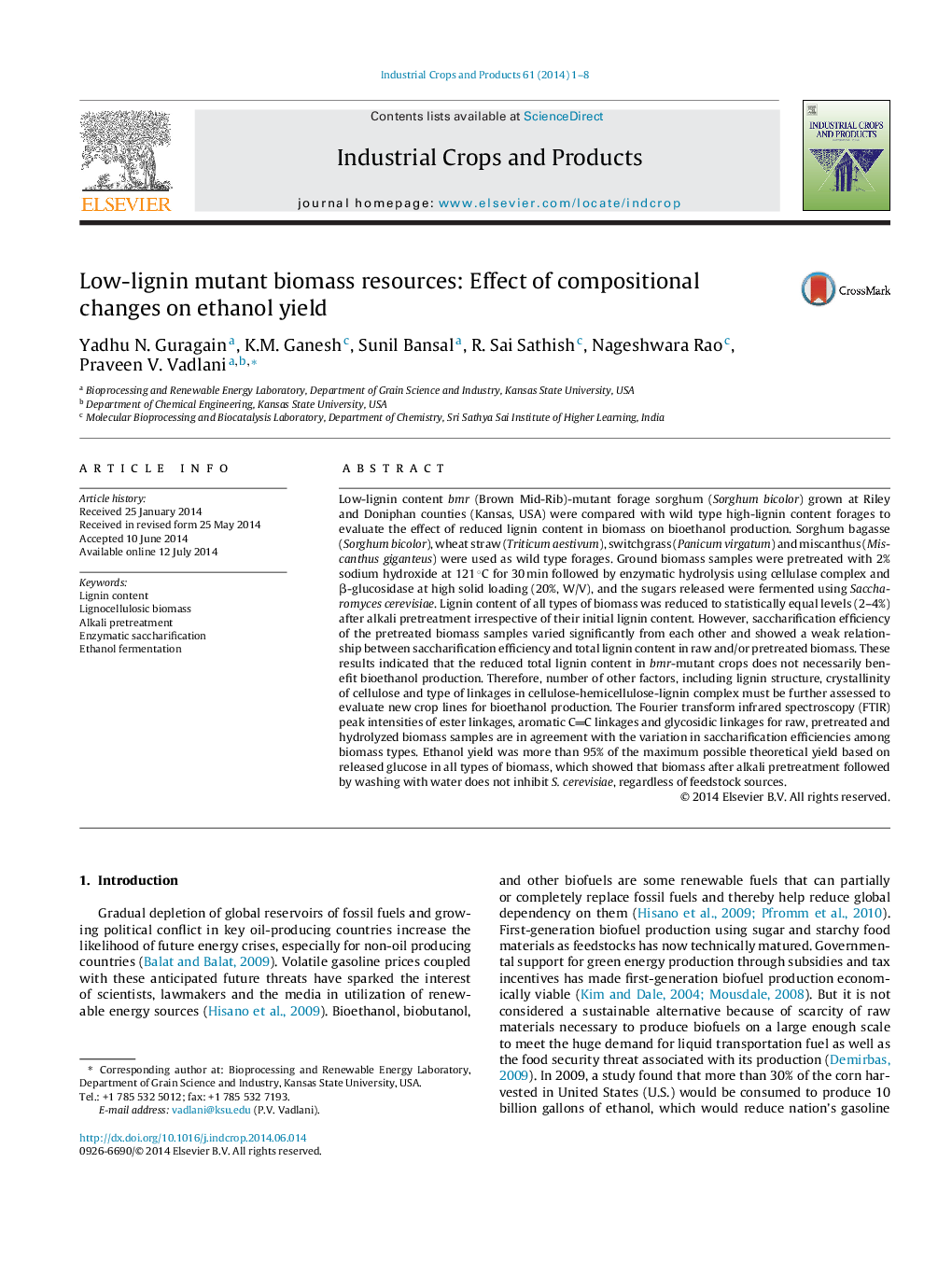| کد مقاله | کد نشریه | سال انتشار | مقاله انگلیسی | نسخه تمام متن |
|---|---|---|---|---|
| 4513163 | 1624848 | 2014 | 8 صفحه PDF | دانلود رایگان |
• Low-lignin content bmr-mutant forage sorghum were evaluated for bioethanol production.
• Lowering the lignin content in raw biomass does not improve enzymatic hydrolysis.
• Alkali pretreatment is effective for delignification of low to high lignin biomass samples.
• Amount of lignin content in biomass does not affect the quality of released sugars.
Low-lignin content bmr (Brown Mid-Rib)-mutant forage sorghum (Sorghum bicolor) grown at Riley and Doniphan counties (Kansas, USA) were compared with wild type high-lignin content forages to evaluate the effect of reduced lignin content in biomass on bioethanol production. Sorghum bagasse (Sorghum bicolor), wheat straw (Triticum aestivum), switchgrass (Panicum virgatum) and miscanthus (Miscanthus giganteus) were used as wild type forages. Ground biomass samples were pretreated with 2% sodium hydroxide at 121 °C for 30 min followed by enzymatic hydrolysis using cellulase complex and β-glucosidase at high solid loading (20%, W/V), and the sugars released were fermented using Saccharomyces cerevisiae. Lignin content of all types of biomass was reduced to statistically equal levels (2–4%) after alkali pretreatment irrespective of their initial lignin content. However, saccharification efficiency of the pretreated biomass samples varied significantly from each other and showed a weak relationship between saccharification efficiency and total lignin content in raw and/or pretreated biomass. These results indicated that the reduced total lignin content in bmr-mutant crops does not necessarily benefit bioethanol production. Therefore, number of other factors, including lignin structure, crystallinity of cellulose and type of linkages in cellulose-hemicellulose-lignin complex must be further assessed to evaluate new crop lines for bioethanol production. The Fourier transform infrared spectroscopy (FTIR) peak intensities of ester linkages, aromatic CC linkages and glycosidic linkages for raw, pretreated and hydrolyzed biomass samples are in agreement with the variation in saccharification efficiencies among biomass types. Ethanol yield was more than 95% of the maximum possible theoretical yield based on released glucose in all types of biomass, which showed that biomass after alkali pretreatment followed by washing with water does not inhibit S. cerevisiae, regardless of feedstock sources.
Journal: Industrial Crops and Products - Volume 61, November 2014, Pages 1–8
